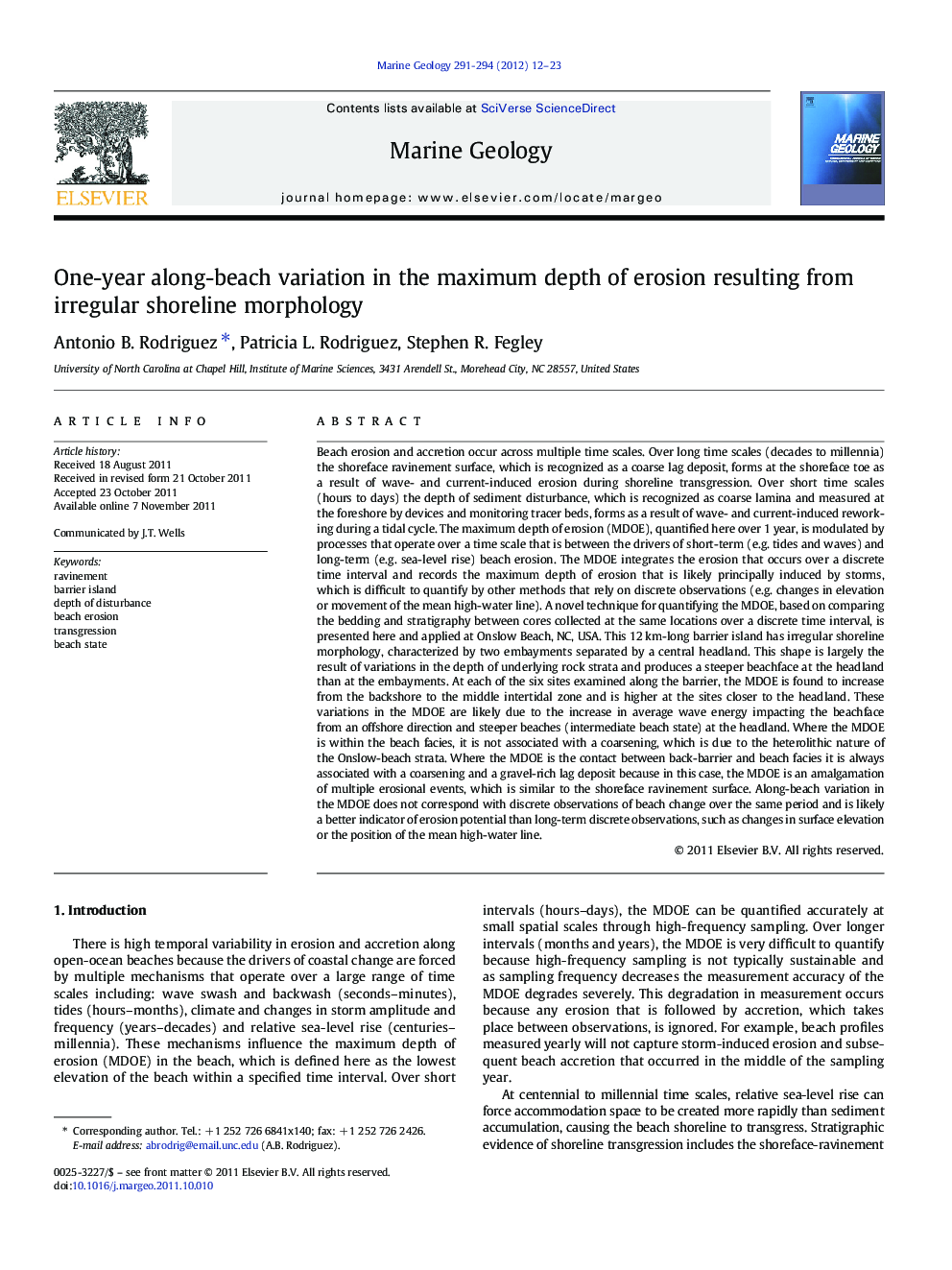| کد مقاله | کد نشریه | سال انتشار | مقاله انگلیسی | نسخه تمام متن |
|---|---|---|---|---|
| 4718626 | 1639129 | 2012 | 12 صفحه PDF | دانلود رایگان |

Beach erosion and accretion occur across multiple time scales. Over long time scales (decades to millennia) the shoreface ravinement surface, which is recognized as a coarse lag deposit, forms at the shoreface toe as a result of wave- and current-induced erosion during shoreline transgression. Over short time scales (hours to days) the depth of sediment disturbance, which is recognized as coarse lamina and measured at the foreshore by devices and monitoring tracer beds, forms as a result of wave- and current-induced reworking during a tidal cycle. The maximum depth of erosion (MDOE), quantified here over 1 year, is modulated by processes that operate over a time scale that is between the drivers of short-term (e.g. tides and waves) and long-term (e.g. sea-level rise) beach erosion. The MDOE integrates the erosion that occurs over a discrete time interval and records the maximum depth of erosion that is likely principally induced by storms, which is difficult to quantify by other methods that rely on discrete observations (e.g. changes in elevation or movement of the mean high-water line). A novel technique for quantifying the MDOE, based on comparing the bedding and stratigraphy between cores collected at the same locations over a discrete time interval, is presented here and applied at Onslow Beach, NC, USA. This 12 km-long barrier island has irregular shoreline morphology, characterized by two embayments separated by a central headland. This shape is largely the result of variations in the depth of underlying rock strata and produces a steeper beachface at the headland than at the embayments. At each of the six sites examined along the barrier, the MDOE is found to increase from the backshore to the middle intertidal zone and is higher at the sites closer to the headland. These variations in the MDOE are likely due to the increase in average wave energy impacting the beachface from an offshore direction and steeper beaches (intermediate beach state) at the headland. Where the MDOE is within the beach facies, it is not associated with a coarsening, which is due to the heterolithic nature of the Onslow-beach strata. Where the MDOE is the contact between back-barrier and beach facies it is always associated with a coarsening and a gravel-rich lag deposit because in this case, the MDOE is an amalgamation of multiple erosional events, which is similar to the shoreface ravinement surface. Along-beach variation in the MDOE does not correspond with discrete observations of beach change over the same period and is likely a better indicator of erosion potential than long-term discrete observations, such as changes in surface elevation or the position of the mean high-water line.
► The maximum depth of erosion (MDOE) indicates erosion potential along a beach.
► Changes in bedding patterns and depths of contacts are used to measure the erosion.
► The increase in the MDOE across the beach corresponds with sediment coarsening.
► Along-beach variations in the MDOE correspond with changes in beach slope.
Journal: Marine Geology - Volumes 291–294, 1 January 2012, Pages 12–23